“Of the application of the punishments”, this is the way in which is entitled the Chapter II, of the Title III, of the Book I of the Spanish Criminal Code (CP). As its own name indicates, in it we find the rules which will be of application when the length of a punishment is established by sentence.
This Chapter II has been divided into two sections, the first is entitled “General rules for the application of the punishments”, and the second “Special rules for the application of the punishments”. On the one hand, the former group will be always of application, it contains the rules which will determine the length to be imposed for a determined crime, on the other hand, the latter group is regarding the rules applicable, when are combined the punishments derived for different crimes committed by the same person.
Through the following lines, I am going to try to analyze each one of the articles, deepening in them for studying their relations with other articles of the CP and above all for trying to uncover their real meaning. The schema to be followed, will be the same proposed by the CP, firstly we will see the articles pertaining to the First Section, and after the articles included in the Second Section, analyzing one article after other, as they are arranged in the CP.
– First Section. General rules for the application of the punishments:
Art. 61:
The article 61 says: “When the Law establishes a punishment, it is understood that the law imposes it to the authors of an infringement consummated.”

From the article 61 is derived that, when we see the punishment imposed to determined crime in the CP, it is the punishment applicable to the author of the crime. For example, when the article 255 of the CP punishes with fine from three to twelve months to who commits fraud of the electric fluid or analogues, is punishing the author of the crime. Another example, when the article 351 punishes with imprisonment from ten to twenty years, those who provoke a fire which supposes a danger for the life or integrity of the persons, it is punishing the authors of the crime.
But the CP broadens the catalogue of the criminally liable persons, including among them not only the authors but also the accomplices in its art. 27. Furthermore, the authors of a crime are not all the same. They are defined in the article 28 as “…who commit the facts by their own, jointly, or by means of another whom they use as a tool”, after the same article adds two sorts of authors more, the instigators, they are who “…directly induce others to the execution of a crime”, and the necessary cooperators, “those who cooperate with the execution of a crime with an act without which it will not have been executed.”
On the other hand, the art. 29 also offers to us the definition of accomplice, it says: “The accomplices are, those who not being comprehended in the above article, cooperate to the execution of the fact with previous or simultaneous facts.”
But, let us try to go deeper in the differences between the authors and the accomplices. On the one hand, the authors, among whom are included the instigators and the necessary cooperators, are who carry out the typified action, with the whole domain of the action characteristic of the authorship. On the other hand, the accomplices, are who participate with a favoring contribution, but which is not indispensable for the commission of the crime, conversely to what happens with the necessary cooperators, because the necessary cooperator, like the author, has the domain over the execution of the crime, and as such, its contribution is essential for its accomplishment.
In short, the punishment established in the CP for determined kind of crime is the applicable to its authors, who are, those who carry out the crime by their own, jointly, or by means of another whom they use as a tool, the instigators and the necessary cooperators. But not the accomplices.
However, a few articles after, the art. 65.3 CP establishes an exception to we have just seen, it says: “When in the instigator or in the necessary cooperator, the conditions, qualities or personal relations in which are based the liability of the author do not concur, the judges or courts may impose the inferior punishment in degree to the envisaged by the law for the infringement committed.” In other words, in the cases in which a determined crime demands for its commission determined qualities, conditions or personal relations over the author, when such requisites do not concur over the necessary cooperator or instigator, the judges or courts may impose upon them the inferior punishment in degree to envisaged by the law. Here we have to stress that, the art. 65.3 deems the decrease of the punishment a possibility, it says expressly “may”, hence, the judges or courts are not obliged to apply it. We should mention some example, the art. 322 of the CP, punishes with imprisonment from six months to two years, or with fine from twelve to twenty-four months, the civil servant who, knowing the injustice, has favorably informed either demolition projects or alteration of buildings protected, therefore, who had induced to the commission of such crime, but is not a civil servant, may be a beneficiary of the decrease of the punishment offered by the art. 65.3 CP. Another example, the article 225 bis punishes the progenitor who without justified cause takes away his son under the legal age, with the punishment of imprisonment from two to four years, and special disqualification for the exercise of the custody from four to ten years. Like in the above case, who was a necessary cooperator of such taking away, but is not the minor´s progenitor, may be a beneficiary of the decrease of the punishment offered by the art. 65.3 CP.
And, we still have to talk about a second feature of the punishment, the infringement punished has to be consummated. But for this, we will use the next article.
Art. 62:
The article 62 says: “To the authors of attempt of the crime will be imposed the inferior punishment in one or two degrees to that envisaged by the Law for the consummated crime, in the extension considered adequate, taking into account the inherent danger to the attempt and the degree of execution achieved.”

Now let us see with more detail its meaning. The punishment to be imposed to the authors of the consummated crime, is the previously determined by the article 61, which at the same time is the envisaged for the fact typified as crime by the CP, this is, without alterations of any kind, the punishment of a consummated crime. But previously, the art. 15 of the CP has already warned to us that: “The consummated crime and the attempt are punishable.” And the article 16 defines what is the attempt, it says: “There is attempt when the subject begins the execution of the crime directly by exterior facts, executing either all or a part of the acts which objectively should produce the result, and however this is not produced for independent causes to the will of the author.” In other words, there is attempt when the execution of the crime begins by external acts, and despite having been executed all or a part of the acts which should produce the desired result, the crime is not committed for independent reasons to the will of the author. This is the attempt which is criminally punishable according to the article 15 and which receives the benefit of the decrease of the punishment according to the article 62, to which will be applied the inferior punishment in one or two degrees of the punishment envisaged in the law for the crime consummated.
But, there is still more, because not all the attempts are punishable, the art. 16 establishes one of those cases of exemptions of criminal liability, which are not enumerated in the art. 20 of the CP. The article 16.2 says: “Who willingly avoids the consummation of the crime, either desisting from the execution already initiated, or impeding the production of the result, will be exempted of the criminal liability for the attempt of crime, without prejudice of the liability into which he could have incurred for the executed acts, if they already constitute other crime.” Thus, who desists of the commission of the crime will be exempt from criminal liability, except for the acts already executed which can be regarded as a crime. This acts, will no receive the benefit of the decrease of the punishment of the article 62, they will be punished according to the punishment envisaged for them for the corresponding article of the CP, and according to which we already know of the art. 61, which imposes it upon the authors, including the instigators and necessary cooperators, but leaving out the accomplices.
Moreover, the article 16 has a third point which says: “When in a fact various subjects intervene, those who both desist from the execution already initiated and seriously, firmly and resolutely either impede or try to impede the consummation will be exempted of criminal liability, without prejudice of the liability in which they may have incurred of the executed acts, if they already constitute other crime.” In this case, when those who intervene in the execution of the crime are more than one, the third point of the article 16 maintains the requisites for being exempted from the criminal liability derived from the crime which was almost committed, but instead of mentioning them alternatively, who desist or impede, it mentions them as requisites which has to be present at the same time, who desist and who impede, and besides it emphasizes the latter adding that the attempt of avoiding the result must be serious, firm and resolute. What is also maintained in both cases, is the criminal liability for the acts which they have committed jointly with the other persons who have taken part in the commission of the crime, and which are already typified as a crime, despite the fact that the desired result has not been consummated. In these cases, like in the above scenario, the decrease in the punishment of the article 62 will not be applied either. On the other hand, those who has participated in the execution of the crime, and both has not desisted and seriously and resolutely impeded its execution, will be criminally liable of the crime which they attempt to carry out, although as an attempt. Here we shall remember the definition of attempt given by the article 16.1, there is attempt when despite of being executed all or part of the acts which should give rise to the typified result, and independently to the will of the author of these acts, the typified fact is not consummated. Hence, to those authors, to those authors although of an attempt, will be applicable the decrease of the punishment of the art. 62, for the crime which finally was not executed thanks to the intervention of the rest of the authors who desisted and impeded its execution.
Other important aspect of the article 62, which we cannot leave without commenting, is the possibility which is offered that, the decrease of the punishment can be in one or two degrees, depending on the inherent danger of the attempt and the degree of execution achieved. The more the danger created for the legal good protected by the norm, and more acts have been carried out for achieving the consummation of the crime, the less will be the decrease in the punishment, in other words, the punishment finally imposed will be only inferior in one degree and not in two, of the punishment envisaged by the CP for the author of a crime consummated, and vice versa.
Art. 63:
If in the article 61, is established the general norm that, the punishment imposed by the law is for al the authors of a consummate infringement, and in the art. 62, we have already seen how is punished the attempt, in other words, an infringement not consummated for alien causes to the will of the author, the rt. 63 is an article which also completes other of the scenarios not included in the general norm of the art. 61. The art. 63 says: “To the accomplices of a consummate or attempted crime will be imposed the inferior punishment in degree to the fixed by the law for the authors of the same crime.”
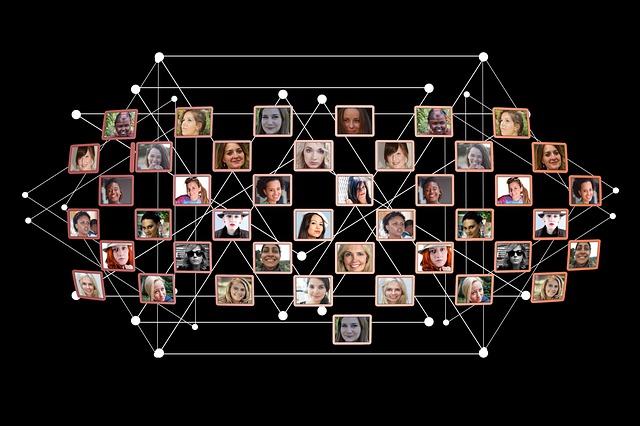
Although we have already mentioned it talking about the article 61, it does not matter if we repeat it due to its importance. The accomplice is defined in the art. 29, and he is who makes a non-essential contribution for the commission of the crime, something which distinguishes it from the necessary cooperator, who is an authentic author of the crime, who does make an indispensable contribution without which the crime would have never been committed, for author is who has the domain over the execution of the fact.
As consequence of the minor relevance, of the contribution of the accomplices for the commission of the crime, the CP diminishes the punishment which can be imposed upon them, it will be the inferior in degree of the punishment established by the law for the authors of the same crime.
But the article says something more to which we have to pay also attention, it says that the inferior punishment in degree of the punishment established in the Law, will be as much for the accomplices of a consummate crime, as for the accomplices of an attempted crime. Now, let us return to the art. 62, which offers to the authors of an attempt of crime an inferior punishment in one or two degrees of the punishment imposed by the Law for the consummate crime, depending on the inherent danger to the attempt and the degree of execution achieved. The contrast between what is said by both articles, makes us to notice a relevant paradox, the accomplice of an attempted crime only will have the right to the inferior punishment in degree of the punishment imposed by the Law for the author of a consummate crime, whereas the author of the same attempt of crime, may have the right of the inferior punishment up to two degrees of the punishment established in the Law for the author of a consummate crime. There is no explanation for the fact that, who has the domain over the execution of the crime has the right to a decrease in the punishment greater than, who only makes a secondary contribution, but this is what the Law says.
Art. 64:
The article 64 establishes an exception to the exceptions of the article 62 and the article 63, for the general rule of the author of a consummate crime of the art. 61.
According to the article 64: “The above rules will not be applicable in the cases that the attempt and the complicity are specially punished by the law.”

As an example to what is stated by the article 64, we can mention the article 485, which punishes with the punishment of permanent reviewable imprisonment to, who kill the King or the Queen, or the Prince or Princess of Asturias. The third section of such article establishes that, the inferior punishment in degree can be imposed in the case of an attempt. The differences with what is said by the art. 62 are: the decrease in the punishment is an option of the court which dictates sentence, for the article 485.3 expressly states “may”, when the article 62 says “will be imposed”; and that the art. 485.3 only offers the inferior punishment in degree, while the article 62 permits to impose the inferior punishment up to two degrees of the punishment imposed by the Law for the consummate crime. Afterwards, in the art. 70.4 is clarified what is the inferior punishment in degree of the permanent reviewable imprisonment, it is the punishment of imprisonment from twenty to thirty years.
Art. 65:
In the art. 65, this Chapter II which we are commenting starts to talk for the first time about the attenuating and aggravating factors, modifying circumstances of the criminal liability, that affect to the application of the punishment in the intentional crimes, according to the norms established in the art. 66, which for example says: “When only an attenuating factors concurs, the punishment will be applied in its inferior half of the punishment established by the Law for the crime.” Therefore, the aggravating and attenuating factors will have a direct effect upon, the punishment to be imposed to the authors of a intentional crime, intensifying or attenuating the punishment, depending on their concurrence during its commission.

The first point of the article 65 says: “The aggravating or attenuating factors which consists in any cause of personal nature will aggravate or attenuate the liability of those upon which concur.” The aggravating or attenuating factors which consist on causes of personal nature, are those which are inherent upon the person in which concur. Let us see it better through an example. Imagine, that two thieves has robbed a shop, for this they used a car which they crashed into the shop window, and thanks to the hole they made in it, the took all the cell phones which were exhibited and in the shop, but they had the bad luck of being arrested by the police during their flight. These thieves will have to face a trial, in which the punishment for the robbery of a shop open to the public out of the opening hours, will be of imprisonment from one to five years (art. 241 CP). Furthermore, those thieves will have to respond of the civil liability derived from the crime, for the damages occasioned (art. 116 CP). One of the attenuating factors of criminal liability established in the art. 21, is “…having proceeded the guilty to repair the damage occasioned to the victim, or to diminish its effects, in any moment of the procedure an before the beginning of the oral trial.” One of the thieves, advised by his lawyer, decides to spend the scanty savings he has, in depositing them in the Court for the civil liability which may arise from the procedure. While the other, who does not have any savings, even after being advised by his lawyer with doing the same, he cannot deposit any money and does not deposit it. Well, although both are authors of the crime, and both are liable in the same amount from the criminal and civil liability derived from it, only one of them will benefit from attenuating factor of having proceed to repair the damages, in the case of being convicted, the one who proceeded to deposit his savings in the Court, while the other, who does not have savings, will not be able of benefiting from it.
Let us now see, the second norm of the art. 65 regarding the attenuating and aggravating factors. This second point of the art. 65 says: “Those which consist in the materia execution of the fact or in the means employed for carry it out, will only serve to aggravate or attenuate the liability of whom has had the knowledge of them in the moment of the action or in their cooperation for the crime.” In this case, the attenuating or aggravating factors will not be inherent circumstances to the person who commits the crime, they will have to concur during the execution of the crime, upon the way in which was carried out the crime. Let us see it with another example. The art.22 of the CP, establishes an aggravating, executing the fact by means of disguise. If, in the case we have seen above, one of the thieves wore a ski mask for avoiding to be recognized by the security cameras, while the other no, who wore the ski mask will be affected by the aggravating factor of the article 22, while the other no.
Lastly, the third point of the article 65 establishes one rule which we have mentioned before, and which is concerned with other exception to the general rule of the art. 61, according to which the punishments established in the CP are referring to the authors of a consummate crime. As we have already seen, according to the article 28, the authors are, those who carry out the crime by their own, jointly or by means of another whom they use as a tool, and the instigators and necessary cooperators. Well, according to the art. 65.3 to the instigators and necessary cooperators, there exists the possibility that the judges or courts impose to them the inferior punishment in degree, for the infringement committed, when in them do not concur the conditions, qualities or personal relations which found the liability of the author. As example, we can use the same used above when we talk about the art. 61.
Art. 66:
The article 66 is an important article, in it is determined how affect the attenuating and aggravating factors which concur during the commission of an intentional crime, to the punishment which finally will be imposed as consequence of this.
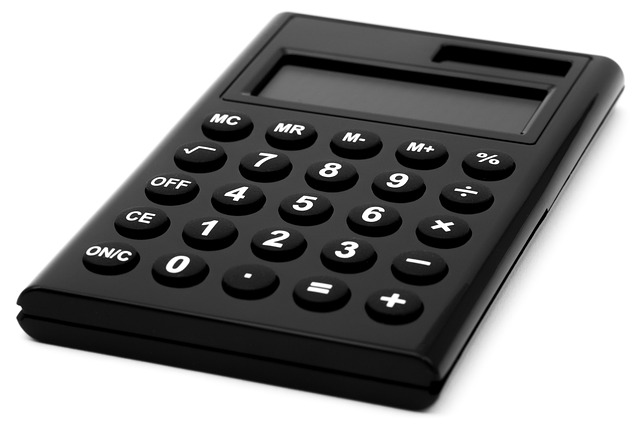
For determining the punishment, in the case of the minor offences and negligences, the judges and courts are free for applying it at their discretion, without being bound by the rules of the art. 66 (art. 66.2 CP). Therefore, the norms of the art. 66, are only for intentional crimes.
Firstly we have to clarify, what is considered as a intentional crime. An intentional crime, is the crime in which have existed malice during its commission. On the other hand, the malice has been understood as the willful and conscious commission of an act which is known is regarded as a crime, although this only comprehends the so-colled direct malice, thereby the above definition is not complete, if we do not take into account also the scenarios in which through an action can be created a risk for a legal good protected, when the existence of such risk and the condition of legal good protected is altogether known by the person who executes it, and despite it he executes it, this is the so-called eventual malice.
Now that we know, what we should understand as intentional crimes, the next we will see is how work the rules established in the article 66, in order to accomplish this labour we are going to use the help of another essential article, the article 70, where is indicated how is calculated the superior or inferior punishment in degree of the punishment established by the law for determined crime. On the contrary, the same article 70, leaves out how is calculated the punishment in its inferior half, or superior half, of the punishment established by the law for determined crime, though this will not be an impediment for explaining it too.
According to the article 66, the attenuating and aggravating factors can have five different effects upon the punishment established in the CP for the author of the consummate crime (art. 61 CP): that the punishment is applied in its inferior half; that the punishment is applied in its superior half; that the punishment applied is the inferior in one or two degrees; that the punishment applied is the superior in degree, and; that the punishment applied is the superior in degree, in its inferior half. Let us see each one of these scenarios:
The punishment in its inferior half:
As we have said, the own CP does not offer to us any clue about how we have to calculate it, but it is not a complex process and responds to three basic operations. The punishment in its inferior half, is calculated first finding what is the half of the punishment, which is the result of subtracting the inferior limit of a punishment from its superior limit, of dividing the amount obtained between two, and of adding this last result to the inferior limit of the punishment.
In order to understand it better, let us see it in an example. The article 243 of the CP punishes with the punishment of imprisonment from one to five years to, who, with the aim of obtaining a benefit, obliges to other, with violence or intimidation, to carry out or omit an act or legal business in prejudice of his patrimony or a third party.
The difference between the superior limit and the inferior limit of the above punishment is obtained subtracting one from five (5-1), which is four (4). This result has to be divided now between two (4/2), which is two (2). Now, to two we have to add the inferior limit, which is one, two plus one (2+1) equals three (3). Three years will be the point which divides the inferior half from the superior half.
Therefore, the punishment in its inferior half of our example in which the punishment of imprisonment oscillates between one and five years will be, from one to three years.
Let us see another example. According to the article 206 of the CP, the calumnies will be punished with either the punishment of imprisonment from six months to two years or the punishment of fine from twelve months to twenty-four months, if they are spread with publicity and, in another case, with fine from six to twelve months.
The first possibility, for the case the calumnies are spread with publicity, is that they are punished either with imprisonment from six months to two years or with fine from twelve to twenty-four months. Then, the judge who imposes the punishment may decide for any of these two possibilities, les us see what would be the punishment in its inferior half in both cases.
The first would be, imprisonment from six months to two years. As in the above case, the first thing we have to do is to subtract the inferior limit from the superior limit of the punishment, in other words, twenty-four months minus six months, which equals eighteen months. Now, we have to divide the eighteen months by 2, from where we obtain nine. To the nine months we have just obtained, we add the inferior limit of the punishment, which is six, and we have fifteen months, which will be the point that divides the superior limit of the punishment from the inferior limit of the punishment. Thus, the punishment in its inferior half will be from six months to fifteen months.
The second possibility is that, the calumnies are punished with fine from twelve to twenty-four months. We have to do the same that we did the two last occasions, first we subtract the inferior limit of the punishment from its superior limit, which is twenty-four months minus twelve months that equals to twelve months. These twelve months should be divided by two, from where we obtain six months. To these six months, we add the inferior limit of the punishment in order to obtain the point which divides the superior limit of the punishment from the inferior limit of the punishment, in other words, six months plus twelve months, which gives as a result eighteen months. Thus, the punishment in its inferior half would be of fine from twelve to eighteen months.
And in the case that the calumnies are without publicity, the punishment of fine oscillate between six and twelve months. We do what we have done before, superior limit of the punishment minus inferior limit of the punishment (12 – 6), which equals six months. Now we divide the six months by two, and we obtain three months. To the three months we add the inferior limit of the punishment, and we obtain the point which divides the superior limit of the punishment from its inferior limit (3+6), which equals 9 months. In this case, for the calumnies without publicity, the punishment in its inferior half is a fine from six to nine months.
The punishment in its superior half:
In order to calculate the punishment in its superior half, we are going to use the same examples, and we are going to depart from the greater part of the work we have already done.
The first example, is concerned with the crime of extortion typified in the art. 243 of the CP, punished with the punishment of imprisonment from one to five years. After subtracting the inferior limit of the punishment from the superior limit, dividing this result by 2, and adding to this number the inferior limit of the punishment, we obtained that the point which divides the superior limit of the punishment from its inferior limit is three years. If the punishment in its inferior half was, between the inferior limit of the punishment and the point which separates the superior limit from the inferior limit, in other words, from one to three years. The punishment in its superior half goes, from this dividing point plus one day, to the superior limit, in other words, from three years and one day, to five years.
The same will happen with the rest of the examples. The calumnies done with publicity, when they are punished with the punishment of imprisonment, this in its superior half will be, from fifteen months plus one day, to twenty-four months. The calumnies done with publicity, when they are punished with the punishment of fine, this in its superior half will be from eighteen months plus one day, to twenty-four months. And the calumnies done without publicity, which also are punished with the punishment of fine, such punishment in its superior half goes, from nine months plus one day, to twelve months.
The inferior punishment in one or two degrees:
In order to calculate the inferior punishment in one or two degrees, we are going to use the help of what is said by the article 70. The second norm of the art. 70.1 says: “The inferior punishment in degree will be formed departing from the inferior figure envisaged for the crime, and subtracting from this the half of its amount, constituting the result of such subtraction its inferior limit. The superior limit of the inferior punishment in degree will be the inferior limit of the punishment envisaged by the law for the crime, reduced in one day or one day of fine depending on the nature of the punishment to be imposed.”
Another norm we have to take into account for when we apply the inferior punishment in two degrees, is the eighth norm of the article 66.1: “When the judges or courts apply the inferior punishment in more than one degree they can do it in all its extension.”
In order to calculate the inferior punishment in one or two degrees, we have to take into account too what is stated by the art. 71, which in the two points that form part of it, establishes other two norms which we should follow: The first, that “In the determination of the punishment inferior in degree, the judges and courts will not be limited by the inferior limits envisaged by the law for each type of punishment, but they can reduce them in the way which results from the application of the corresponding rule.” And the second, that “Notwithstanding, when for application of the above rules proceeds to impose a punishment of imprisonment inferior to three months, this will be in all cases substituted for the punishment of either fine, community service, or permanent localization, although the law does not envisaged these punishment for such crime, substituting each day of imprisonment for two installments of fine or for one working day or one day of permanent localization.”
Let us return to the first example which we saw, the crime of extortion (art. 243 CP) punished with imprisonment from one to five years. Now, let us follow the second rule of the art. 70.1, departing from the inferior limit, which is one year, and from this we subtract the half of its amount, which equals to six months. This result is our new inferior limit of the inferior punishment in degree. The old inferior limit, minus one day, will be our new superior limit of the inferior punishment in degree. Hence, the inferior punishment in degree for the crime of extortion will be, from six months to one year minus one day of imprisonment.
Let us now calculate the inferior punishment in two degrees. Here we depart from the inferior punishment in one degree, and like we have done before, to the inferior limit of the inferior punishment in degree we subtract its half. In other words, six months minus three months, equals three months. This will be our new inferior limit. The superior limit of the inferior punishment in two degrees will be, the inferior limit of the inferior punishment in one degree minus one day. Therefore, the inferior punishment in two degrees will be of imprisonment from three months to six months minus one day. We have to remember here the eighth rule of the article 66.1, which was mentioned at the beginning of this section, the judges and courts when they apply the inferior punishment in more than one degree, they can do it in all its extension.
As we see, the first rule of the article 71 is wholly applicable when we have applied the inferior punishment in degree, for the punishment has stood below the inferior limit marked by the law for the crime of extortion. What will not be of application is the second rule of the art. 71, because even when the punishment was reduced in two degrees, it did not surpass the limit of three months of imprisonment.
Let us now see the rest of examples. The calumnies (art. 206 CP) with publicity, are punished with imprisonment from six months to two years, or fine from twelve to twenty-four months. In the first case, the inferior punishment in degree will be calculated, first subtracting from the inferior limit its half, in other words, six months minus three months, which equals to three months, this will be the inferior limit of the inferior punishment in degree. Afterwards, the superior limit of the inferior punishment in degree will pass to be what before was the inferior limit, minus one day, in other words, six months minus one day. Therefore, the inferior punishment in degree will be from three months to six months minus one day of imprisonment.
Now the inferior punishment in two degrees. The inferior punishment in two degrees will be calculated, subtracting from the three months, which are the inferior limit of the inferior punishment in degree, its half, which equals to one month and fifteen days, this will be the inferior limit of the inferior punishment in two degrees. The superior limit of the inferior punishment in two degrees, will be the inferior limit of the inferior punishment in degree, minus one day. The inferior punishment in two degrees will be of imprisonment from one month and fifteen days to three month minus one day. Here, what is said by the second point of the article 71 will be of application, and the punishment of imprisonment must be substituted for the punishment of either fine, community service, or permanent localization.
The other punishment envisaged for the calumnies with publicity is, the punishment of fine from twelve to twenty-four months. We do the same, that we did before, from the twelve months we subtract its half, and we obtain six months, which will be the inferior limit of the inferior punishment in degree. Now, the superior limit of the inferior punishment in degree will be, the old inferior limit minus one day, in other words, twelve months minus one day. Therefore, the inferior punishment in degree will be of fine from six months to twelve months minus one day.
Let us now see the inferior punishment in two degrees. Like before, from the inferior limit of the inferior punishment in degree we subtract its half, in other words, six months minus three, which equals to three months, this will be our new inferior limit of the inferior punishment in two degrees. The superior limit of the inferior punishment in two degrees will be, the old inferior limit minus one day, in other words, six months minus one day. Therefore, the inferior punishment in two degrees will be of fine from three months to six months minus one day.
The last scenario, is for the case in which the calumnies has been made without publicity, which are punished with fine from six to twelve months. Let us do the same. From the inferior limit of the punishment we subtract its half, which equals to threes months, these will be our new inferior limit. Now, our new superior limit will be, our old inferior limit minus one day, in other words, six months minus one day. Thus, the inferior punishment in degree in this case will be of fine from three months to six months minus one day.
Now the inferior punishment in two degrees. Like before, we depart from the inferior limit of the inferior punishment in degree, and from this we subtract its half, in other words, three months minus one month and fifteen days, which equals, one month and fifteen days. Our new superior limit will be, the inferior limit of the punishment inferior in degree minus one day, in other words, three months minus one day. Therefore, the punishment inferior in two degree will be of fine, from one month and fifteen days, to three months minus one day.
The superior punishment in degree:
According to the first section, of the first point of the art. 70: “The superior punishment in degree will be formed departing from the superior figure marked by the law for the crime, and augmenting it the half of its amount, constituting the resulting sum it superior limit. The inferior limit of the superior punishment in degree will be the superior limit of the punishment envisaged by the law for the crime, incremented in one day or in one day of fine depending on the nature of the punishment to be imposed.”
Let us return to the first of the examples. We said that, the crime of extortion (art. 243 CP) is punished with the punishment of imprisonment from one to five years. Now let us follow the rule established by the first section of the art. 70.1. To the punishment of five years we have to add its half, in other words, five years plus two years and 6 months, which equals seven years and six months. This will be the new superior limit of the superior punishment in degree. The inferior limit of the superior punishment in degree will be, the old superior limit more one day, in other words, five years plus one day. Therefore, the superior punishment in degree will be of imprisonment, from five years and one day, to seven years and 6 months.
Now is the turn of the calumnies (art. 206 CP) done with publicity, which, as we have see before in more than one occasion, are punished with either imprisonment from six months to two years, or fine from twelve to twenty-four months. In the case of being punished with imprisonment, the superior limit of the superior punishment in degree will be formed by the two years of the old superior limit plus its half, in other words, two plus one, which equals three. And the inferior limit of the superior punishment in degree will be, the old superior limit plus one day, in other words, two years and one day. Therefore, the superior punishment in degree will be of imprisonment from two years and one day to three years.
The same will happen, with the calumnies done with publicity when they are punished with fine. To the twenty-four months we have to add its half, in order to obtain the superior limit of the superior punishment in degree, in other words, twenty-four months plus twelve months, which equals to thirty-six months. The inferior limit of the superior punishment in degree will be, the twenty-four months plus one day. Therefore, the superior punishment in degree will be of fine from twenty-four months and one day to thirty-six months.
If the calumnies (art. 206 CP) are spread without publicity, are punished with fine from six to twelve months. We have to do the same than before, to the superior limit we add its half, the result will be the superior limit of the superior punishment in degree. In other words, twelve plus six, which equals to eighteen months. Now, the inferior limit of the superior punishment in degree is, the old superior limit plus one day. Therefore, the superior punishment in degree will be of fine from twelve months and one day to eighteen months.
The superior punishment in degree in its inferior half:
How we obtain the superior punishment in degree in its inferior half, is not explained by the CP. Nevertheless, we are going to depart from two things we already know, we know how to calculate the superior punishment in degree and we know how to calculate the punishment in its inferior half. What we will do, is to combine both things, first we will obtain the superior punishments in degree, and from this superior punishment in degree we will obtain its inferior half.
Let us go back again to our first example. The crime of extortion is punished by the CP, with imprisonment from one to five years. Its superior punishment in degree was of imprisonment, from five years and one day to seven years and six months.
The next step, will be to obtain such punishment in its inferior half. For this, from the superior limit we subtract the inferior limit, in other words, seven years and six months minus five years (for the time being we forget the day), which equals to two years and half. Now this two years should be divided by two, being the result one year and three months. To the one year and three months we add the inferior limit of the superior punishment in degree, in other words, five years plus one year and three months, which equals to six years and three months. The six years and three months are the point which divides the inferior limit from the superior limit of the superior punishment in degree. The punishment in its inferior half, of the superior punishment in degree, will be of five years and one day, to six years and three months.
Let us continue with the rest of the examples. The next is the calumnies (art. 206 CP) done with publicity and punished with imprisonment from six months to two years. Like before, the first thing will be to calculate the superior punishment in degree, which is of imprisonment from two years and one day to three years. Now, we have to calculate the punishment in its inferior half of this superior punishment in degree. For this, we subtract from the three years the two years, and we obtain one year. After, this year is divided by two, which equals to six, and these six months now are added to the inferior limit of the superior punishment in degree, which equals to two years and six months. The superior punishment in degree, in its inferior half, is from two years and one day to two years and six months.
The calumnies (art. 206 CP) done with publicity, can also be punished with fine from twelve to twenty-four months. The superior punishment in degree is from twenty-four months and one day, to thirty-six months. Now, we pass to calculate its inferior half, for this the subtract from the thirty-six months the twenty-four months, which equals to twelve months. Afterwards, we divide this twelve months by two, and we obtain six months, which later are added to the inferior limit of the superior punishment in degree. The superior punishment in degree, in its superior half will be of fine from twenty-four months and one day, to thirty months.
The last example. The calumnies (art. 206 CP) done without publicity, are punished with fine from six to twelve months. Like before, the first is to obtain the superior punishment in degree, which is from twelve months and one day to eighteen months. In the next step, we calculate the superior punishment in degree in its inferior half. For this, we subtract from the eighteen months the twelve months, which is six months, now we divide this six months by two, and we obtain three months. This three months should be added to the inferior limit of the superior punishment in degree, and we obtain that the superior punishment in degree in its inferior half is of fine from twelve months and one day, to fifteen months.
At this juncture, we already know how to calculate each of the alterations in the punishment established in the CP for the author of a consummate crime, let us now see the rules gathered in the first point of the article 66 for when attenuating or aggravating factors concur. They are eight rules aimed to the judges and court hearing and ruling the cases, and apply only to intentional crimes, being left out the negligences and minor offences.
The first: “When only one attenuating factor concur, they will apply the punishment in its inferior half of the punishment established by the law for such crime.”
The second: “When two or more attenuating factors concur, or more than one very qualified, and aggravating factors do not concur, they will apply the inferior punishment in one or two degrees to the established by the law, taking into account the number and entity of such attenuating factors.” Now that we know, that the inferior punishment in one or two degrees, supposes a greater decrease in the punishment than the punishment in its inferior half, we understand, how the concurrence of more than one attenuating factor, or at least one very qualified, are better rewarded by the law.
The third: “When only one or two aggravating factors concur, they will apply the punishment in its superior half of the established by the law for the crime.” In this case, the application of the punishment in its superior half, also comprehends more than one aggravating factor, although with the limit of two.
The fourth: “When more than two aggravating factors concur and attenuating factors do not concur, they may apply the superior punishment in degree to the established by the law, in its inferior half.” More than two aggravating factors, without concurring any attenuating factor, will suppose the application of the superior punishment in degree in its inferior half, which, as we haver already seen, at least limits the discretion in the application of the punishment by judges and courts in part, since they cannot apply it in the severest way which allows the superior punishment in degree.
The fifth: “When the aggravating factor of recidivism concurs with the qualification that the guilty committing an offense has been executorily convicted, at least, for three crimes comprehended in the same title of the Code, always that they are of the same nature, they can apply the superior punishment in degree to the envisaged by the law for the crime, taking into account the preceding convictions, as well as the gravity of the new crime committed. To the effects of this rule the preceding cancelled criminal records or which should be cancelled, will not be computed.”
The fifth norm of the article 66.1 of the CP, is the norm which contains the scenario in which the convicted for firm sentence, more can be seen aggravated its conviction, since he can be punished with the superior punishment in degree, without being limited to its inferior half as in the fourth norm, but we have to stress that it is a possibility, neither the judge nor the court which dictate sentence are obliged to apply it. For this is demanded the following requisite, the aggravating factor of recidivism must concur, for having been executorily convicted, for at least, three crimes of the comprehended in the same title of the CP, always that these crimes are of the same nature. This supposes, demanding an something more than the aggravating factor of recidivism of the eighth section of the article 22, for in its case, only is demanded having been executorily convicted for only one crime of the comprehended in the same title of the CP, besides the common requisite of being of the same nature.
Notwithstanding, there exists the possibility that, even having been executorily convicted, for at least three crimes of the comprehended in the same title of the CP, and yet being them of the same nature, the convicted can elude the application of the superior punishment in degree without leaving it to the discretion of the judge or court. For this, the criminal records which correspond to the convictions that sustain the recidivism, must have been cancelled. In the art. 136 of the CP, is where we find the terms, which once they have elapsed, it supposes the cancellation of the criminal records. Therefore, although the recidivist has been executorily convicted, at least, in three occasions for three crimes pertaining to the same title of the CP and of the same nature, if the terms of the art. 136 have elapsed, he cannot be convicted to the superior punishment in degree.
Now is the turn of the sixth norm of the article 66.1 of the CP: “When attenuating or aggravating factors do not concur, they will apply the punishment established by the law for the crime committed, in the extension that they deem adequate, taking into account the personal circumstances of the criminal and the greater or lesser gravity of the fact.”
In this scenario, when aggravating and attenuating factors do not concur, the application of the punishment established in the CP for the author of a consummate crime will be left to the discretion of the judges o courts, in the extension they deem adequate on the grounds of the circumstances of the fact and the author.
The next norm is the seventh: “When attenuating and aggravating factors concur, they will rationally asses and compensate them for the individualization of the punishment. In the case of remaining a qualified attenuating factor they will apply the inferior punishment in degree. If a qualified aggravating factor remains, they will apply the punishment in its superior half.”
All the cases that we have seen so far, were for the scenarios in which only attenuating or aggravating factors concur, without the possibility that in the same case aggravating and attenuating factors concur at the same time. It is in the seventh norm that this possibility is studied. If aggravating and attenuating factors concur, the judges and courts must asses and compensate them when they impose the punishment. But, if the any of the aggravating or attenuating factors are present in a qualified form, and therefore, they domain over the others, the judges and courts should apply the inferior punishment in degree when it is an attenuating factor, or the punishment in its superior half when it is an aggravating factor the dominator.
The last is the eighth rule: “When the judges or courts applies the inferior punishment in more than one degree they can do it in all its extension.” A norm which we have already commented, and even utilized, in the section where we have explained how the application of the inferior punishment in two degrees works.
Art. 66 bis:
In the article 66 bis, is established how affects the application of the punishment, the concurrence of aggravating or attenuating factors when the crime is committed by a legal entity, which according to the art. 31 bis of the CP, are criminally liable of the punishments which expressly are envisaged in the CP.

The first which is said to us by the art. 66 bis is that, the rules envisaged in the article 66.1 are also applicable to the legal entities, with the exception of the fifth norm, which refers to the effects of the aggravating factor of recidivism when this is specially qualified, in other words, when at least three crimes pertaining to the same title of the CP are committed, and besides, these are of the same nature.
Nevertheless, besides the article 66 bis establishes additional norms to those envisaged in the article 66. In particular, it establishes two norms. The first, when the punishment assigned in the Book II of the CP to a legal entity, is some of the envisaged from the letter b) to the g) of the seventh point of the article 33, for deciding about its imposition and extension the following requisites have to be taken into account: a) Its necessity for preventing the continuity of the criminal activity and its effects; b) Its economic and social consequences, and specially its effects for the workers, and c) The position within the structure of the legal entity which occupies the natural person or the organ which did not comply with its duty of control. Thus, only when the punishment to be imposed is the punishment of fine for quotas or proportional, the above requisites should not be taken into account.
The second norm, is for the scenario that the punishments envisaged from the letter c) to g) of the seventh point of the article 33, are imposed with a limited duration. In these cases, its duration cannot exceed, the superior limit of the freedom´s privative punishment for the case in which the crime was committed by a natural person. Afterwards, this second norm adds that, for the imposition of the norms envisaged from the letters c) to g) for more than two years, it will be necessary that some of the following requisites are met: a) That the legal entity is a recidivist, or b) That the legal entity, is used as a tool for the commission of crimes. It will be understood that the second requisite is met, always that the legal activity of the legal entity is less relevant than its criminal activity. In order to see if a legal entity is recidivist, we have to attend to what is stated by the article 22 in its eighth point, there will be recidivism, when the guilty has been executorily convicted for another crime of the same title of the CP, when it is of the same nature.
After this, the second norm adds that: “When the liability of the legal entity, in the cases envisaged in the letter b) of the first point of the article 31 bis, derives from the infringement of the duties of oversight, vigilance and control which do not have a grave character, this punishments will have in any case a maximum duration of two years.” What is established in the letter b) of the first point of the article 31 bis, is one of the types of crimes for which the legal entities are liable. In the same article 31 bis, and regarding this kind of crime, is established an exemption. “the legal entity will be exempted from criminal liability if, before the commission of the crime, has efficiently adopted and executed a model of organization and management which is adequate for either preventing crimes of the nature of which was committed or significantly reducing the risk of its commission.” But when, committed the crime, the concurrence of the above exemption can only be proved partially, it will work as an attenuating factor. Therefore, besides the limitation of punishment envisaged in the second rule of the article 66 bis for the crimes from the letter c) to g) of the point seven of the article 33, we have to take into account also the exemption and attenuating factor of the art. 31 bis, for it will affect too to the punishment imposable to a legal entity for the crimes of the letter b) of the point one of the article 31 bis.
And after adding the above, this second norm continues adding that: “For the imposition with permanent character of the sanctions envisaged in the letters b) and e), and for the imposition for a term of more than five years of the envisaged in the letters e) and f) of the seventh point of the article 33, it will be necessary that some of the two following circumstances is met:
a) That it is the scenario envisaged in the fifth rule of the first point of the article 66.
b) The the legal entity is utilized as a tool for the commission of crimes. It will be understood that this requisite concurs, always that the legal activity of the legal entity is less relevant than its criminal activity.”
The sanctions envisaged in the letters b) and e) are, the dissolution of the legal entity and the prohibition of carrying out in the future the activities in whose exercise has been committed, favored or covered the crime, respectively. And the envisaged in the letter f), which refers to the disqualification for obtaining subventions and public aids, for contracting with the public sector and for enjoying tax and social security benefits and incentives.
Art. 67:
The article 67 established one exception, the rules envisaged in the article 66 and the article 66 bis, “will not be applied to the aggravating or attenuating factors which the Law has taken into account describing or punishing the infraction, nor to those which are inherent to the crime that without concurring it cannot be committed.”
Art. 68:
The article 68 says: “In the cases envisaged in the first circumstance of the article 21, the judges and courts will impose the inferior punishment in one or two degrees to the stated by the law, taking into account the number and the entity of the requisites which lack or concur, and the personal circumstances of the author, without prejudice of the application of the article 66 of the present Code.”

The first circumstance of the article 21, is an special attenuating factor, because it will take place in the cases where does not concur all the necessary requisites for applying any of the exceptions of the article 20. When such attenuating factor concurs, the inferior punishments in one or two degrees can be imposed, something which distinguishes it from the rest of attenuating factors, since as we saw in the first rule of the article 66.1, when any of them concur only will have the right to the punishment in its inferior half of the punishment envisaged by the law for such crime.
Article 69:
The article 69 allows the application of the law which regulates the criminal liability of the minors, to those who are between the eighteen and twenty-one years. The law that regulates the criminal liability of the minor is the Organic Law 5/2000, and it will be applicable to them when a judge agrees it according to the personal circumstances of the author and its maturity, and the nature and gravity of the facts.

Here we have to remember too, what is established in the article 19, to the minors under the legal age of eighteen years old will not be applicable the norms of the CP, they are criminally liable according to the rules which regulates the criminal liability of the minor, which is, as we have already seem the LO 5/2000. Another idea we cannot forget is that, the LO 5/2000 is not applicable to all the minors under the legal age of eighteen years old, to the superior limit of eighteen years old established by the art. 19 of the CP, we have to add other inferior, the fourteen years old. Therefore, the LO 5/2000 only will be applicable to the minor between the fourteen years old, and the eighteen years old, those who do not achieve that age are altogether exempted of criminal liability, but this does not include the civil liability derived from the crime (art. 1902 of the Spanish Civil Code), from which the father or tutors of the minor should respond (art. 1903 of the Spanish Criminal Code), but in a civil procedure.
Art. 70:
As we have already seen when we have talked about the article 66, in the article 70, and more specifically in its first point, are established the norms according to which will be calculated, the superior punishment in degree and the inferior punishment in degree of the punishment established by the CP for the author of a consummate crime. It is not necessary to mention or use them, since we have already seen them applied to different examples.

The second point of the chapter 70, establishes another norm for calculating the punishment, it says: “In order to determine the superior or inferior half of the punishment, or to concrete the inferior or superior punishment in degree, the day or the fine day will be regarded as indivisible and will act as penological units of more or less, depending on the cases.” This article means that, the minimum unit for calculating the corresponding punishment in its inferior or superior half, or inferior or superior in degree, will be day. The days cannot be divided, and as such, they will serve to distinguish for example the inferior or superior half of the punishment, o the inferior or superior punishment in degree, as we have seen in the examples of the article 66.
The next point of the article 70 is the third, in it we find the maximums of each kind of punishment, after being applied the superior punishment in degree of the punishment envisaged by the law for the author of a consummate crime.
The first norm of this third point says: “If the punishment determined is of imprisonment, the same punishment, with the clause that its maximum duration will be of thirty years.”
Let us now see an example. The crime of rebellion (art. 473 CP) for those who has promoted and sustained the rebellion, and the chiefs of it, is punished withe imprisonment from fifteen to twenty-five years. Its superior punishment in degree will be of imprisonment from twenty-five years and one day, to thirty-seven years and six months. In this case, if the fifth circumstance of the art. 66.1, or the seventh of the same article are applicable, in other words, the aggravating factors of qualified recidivism or a qualified aggravation factor, the judges and courts will be able to apply a punishment of imprisonment up to thirty-seven years and six months. But the the first rule of the article 70.3 impedes that this scenario takes place, since it limits the punishment of imprisonment to thirty years, when it is the result of applying the superior punishment in degree of the established by the law.
The second norm of the third point of the article 70 is: “If it is the total or special disqualification, the same punishment, with the clause that its maximum duration will be of thirty years.” Therefore, in this case is limited the total or special disqualification to the term of thirty years.
The third norm is: “If it is the suspension of public job or post, the same punishment, with the clause that its maximum duration will be of eight years.” In this case, the suspension of public job or post is limited to eight years.
The fourth norm: “In the case of the privation of the right of driving motor vehicles or mopeds, the same punishment, with the clause that its maximum duration will be of fifteen years.”
The fifth norm: “In the case of the privation of the right to the ownership or carrying of arms, the same punishment, with the clause that its maximum duration will be of twenty years.”
The sixth norm: “In the case of the privation of residing in determined places or of going to them, the same punishment, with the clause that its maximum duration will be of twenty years.”
The seventh norm: “In the case of the prohibition of nearing to the victim or those part of his family or other persons which the court or judge determines, the same punishment, with clause that its maximum duration will be of twenty years.”
The eighth norm: “In the case of the prohibition of communicating with the victim or those part of his family or other persons which the court or judge determines, the same punishment, with the clause that its maximum duration will be of twenty years.”
And the ninth and last norm: “It it is of fine, the same punishment, with the clause that its maximum duration will be of thirty months.”
Finally, in the fourth point of the article 70.3 is established another norm, although in this case regarding the inferior punishment in degree: “The inferior punishment in degree to the permanent reviewable imprisonment is the punishment of imprisonment from twenty to thirty years.” A really important precept, since it transforms the permanent reviewable imprisonment, which is only a life imprisonment masked by the laws of the article 92, into a regular conviction of imprisonment, where after being exhausted the term of the conviction, the liberty is wholly recovered. For this, two or more attenuating circumstances should concur, or at least one qualified (art. 66.1.2º CP), or when concurring aggravating and attenuating factors at the same time, the qualified attenuating factor should prevail (art. 66.1.7ª CP), or the scenario envisaged in the art. 68 should take place.
Art. 71:
An article which we have already mentioned, when we talked about the article 66 and how is calculated the inferior punishment in one or two degrees of the established by the law. This is the reason why, we will not talk again about it.
Art. 72:
So far, we have seen the norms according to which the punishment envisaged by the law, for the author of a consummate crime, is altered, and the cases in which we can do it. Yet, the judges and courts in the exercise of their judicial power of which are endowed by the Spanish Constitution (art. 117.3), have a broad room for maneuver, for determining the punishment. Let us take one of our examples, in the crime of extortion (art. 243 CP), when attenuating or aggravating factors do not concur, the judges or courts can impose a punishment of imprisonment from one to five years, what is a really broad room for maneuver.
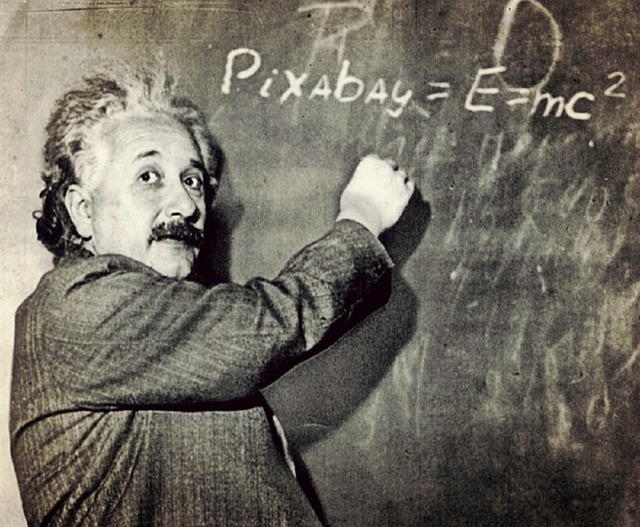
Nevertheless, the article 72 obliges to the judges and courts, in the application of the punishment according to the norms of this chapter, to reason in the sentence the concrete degree and extension of the punishment imposed.
The judges´s and court’s duty of motivating the sentences, is recognized by the article 120.3 of the Spanish Constitution, which literally says: “The sentences will always be motivated and pronounced in public audience.” However, this duty of the judges and courts of motivating the sentence, is also a fundamental right of all those who are subjected to a judicial procedure, as consequence of the interpretation which the Spanish judges and courts have done of the article 24.1 of the Spanish Constitution, where is recognized the right to effective judicial protection. This extract from the Spanish Supreme Court’s sentence (STS) 3152/2022, is really interesting regarding the above: “The right to effective judicial protection, according to reiterated constitutional and cassation doctrine (the Spanish Constitutional Court´ s sentence (STC) 50/2014 of 7 April 2014 is relevant), comprehends the right of those subjected to a judicial procedure of obtaining from the judicial organs a coherent, motivated and founded in Law sentence about their claims during the judicial procedure. This supposes, in the first place, that the judicial resolution has to be motivated, in other words, it has to contain the element and reasons which allow to know the judicial criteria which found the decision (STC 58/1997, of 18 March and STC 25/2000 of 18 October) or, what is the same, it must be the consequence of a rational exegesis of the legal system and not the fruit of a mistake or the arbitrariness (STC 146/2005 of 6 June). The above implies the guarantee that the reasons of the decision are not the arbitrary application of the norms which are deemed as adequate to the case. Either, if the application of the law is a manifest error, or if it is arbitrary or manifestly unreasonable, it cannot be considered as founded in law, since the application of the legality would be only a mere appearance (STC 147/1999 of 4 August, STC 25/2000 of 31 January, STC 221/2001 of 31 October). In short, the art. 24.1 CE imposes to the judicial organs not only the obligation of offering a motivated answer to the claims, but besides, it must have legal content and not being arbitrary (STC 8/2005 of 17 January, STC 13/2012 of 30 January and STC of 11 February).»
Therefore, all the sentences must be motivated and must be founded in law.
– Second Section. Special rules for the application of the punishments:
Art. 73:
Like the First Section with the article 61, in the first article of the Second Section, which is the article 73, what we find is a general rule. The article 73 says: “To the person liable of two or more crimes or misdemeanors will be imposed all the punishments corresponding to the different infringements for they simultaneous fulfillment, if it is possible, due to the nature and effects of them.”
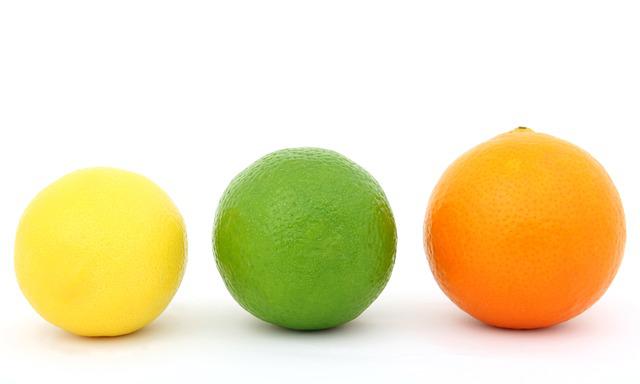
What the article 73 means is that, the author of two or more crimes must fulfill all their punishments at the same time. But it only will be possible, when the punishments envisaged for each of the crimes are different in nature and their effects compatible, for it is not possible to comply with two punishments of imprisonment at the same time, first you must comply with one, and after with the other, nor it is possible to comply with a punishment of imprisonment and other of permanent localization at the same time, for the first is fulfilled in the jail, and the second mainly in the domicile of the convicted.
Art. 74:
After the general rule of the article 73, the author of two or more crimes must comply with all the punishments at the same time, the exceptions come. The first exception that we find, is in the art. 74, where is regulated the continued crime.

The first point of the article 74 says: “Notwithstanding the stated in the above article, who, in execution of a preconceived plan or taking advantage of identical occasion, makes a plurality of actions or omissions which offend one or various subjects and infringe the same criminal precept or precepts of the same or similar nature, will be punished as author of a continued crime or misdemeanor with the punishment envisaged for the gravest infringement, which will be imposed in its superior half, being able to achieve the inferior half of the superior punishment in degree.”
The continued crime of the article 74.1 consists in, the commission of various crimes which infringe the same precept of the CP, or different precepts but of the same nature, taking advantage of the same occasion or the same plan.
Let us see an example for understanding it better. Imagine that, one subject advertise in a website the sale of various laptops, all are the same model, dear, each one with a price of 1.000 euros. The advertisement is impeccable, it has a recent date, the photographs of the laptops, the email of the seller, the bank account to which has to be made the payment, it says that there are more ten laptops for sale, and not only these, the laptops are advertised as new and with half of the price which they have in any other place. Although it has a little problem, the seller has only make a couple of selling so far, although in all of them has good commentaries. Despite the fact of being an almost unknown seller, the laptops are too cheap, and there are various buyers, for example, five persons each of them from a different Spanish city. All of them make the payment to the bank account indicated on the advertisement, but none of them receive the laptop. Before long, the advertisement disappear, and nobody responds to the email which was in it.
In this case, who has advertised the product in the website and included his bank account in it, would be the author of a crime of swindle (art. 248 and following of the CP), punished with imprisonment from six months to three years. But besides, it would be a continued crime, punished with the superior punishment in degree in its superior half. In other words, the author of the swindle would face a punishment of imprisonment from three years and one day, to three years and nine months.
The STS 2867/2022, also offers to us a couple of definitions of what we must understand for a continued crime: “According we already expressed in the sentence number 749/2016 of 11 October, “the continued crime is a doctrinal and jurisprudential creation, recognized by the legislator in the reform of the Criminal Code of 1983 (article 69 bis) which constitutes an exception to the general principle of material accumulation of punishments and the combination of offences, applying the rule of the absorption with the aggravation of the punishment envisaged for the gravest infringement of the gathered under the heading of criminal continuity. This is basically produced when a plurality of crimes take place, constituting each of them a different crime and it is founded in the existence between them of a unity subjective/objective which reveals itself as a unitary continuous process, out of the cases of natural unity of action, and for this it is talked about the existence of a juridic unity or of a typical unity of action in the broad sense.”
In a similar vein, we said in the sentences number 211/2017 of 29 March and 86/2017 of 16 February, that “The continued crime is born from a plurality of actions which individually contemplated are susceptible of being qualified as independent crimes but from a perspective of the material unlawfulness are present as a unitary infraction, but it is not a figure destined to resolve in benefit of the convicted, the problems of application of the punishments which set out the combination of offences, but like a real “juridical reality”, which allow to build a unitary process over a plurality of actions which present a determined objective unity.” (STS 420/2021, of 19 May).”
Let us now see the second point of the article 74, which says: “If they are infringements against the patrimony, the punishment will be imposed taking into account the total prejudice caused. In these infringements the Judge or Court will impose, motivating it, the superior punishment in one or two degrees, in the extension they consider convenient, if the fact is specially grave and has damaged a plurality of persons.”
This second point of the article 74, connects the extension of the punishment with the amount of the damage caused, when we are treating with crimes against the patrimony. Besides, in these cases, will be applicable the superior punishment up to two degrees, of the punishment envisaged in the CP for the consummate crime, something which even does not happen when concurs the aggravating factor of recidivism according to the fifth rule of the article 66.1 CP.
Let us now return to our above example. The swindle is a crime against the patrimony, therefore to our last example would be applicable the envisaged in this second point of the article 74. Now, imagine, that after selling these five laptops, the swindler does not have enough and does not retire the advertisement. A month passes with the advertisement being exhibited in the website, and he sells twenty laptops. The amount swindled is now of 20.000 euros, and the persons who has been swindled twenty. In these case, the punishment faced by our swindler can reach even the superior in two degrees of the envisaged for the CP. In other words, he would face a punishment of imprisonment from four years, six months and one day, to six years and nine months.
Now is the turn of the third point of the art. 74, which says: “The offences to eminently personal goods are exempted from the established above, except the infringements against the honor or sexual indemnity and freedom which affect to the same passive subject. In these cases, the nature of the fact and the infringed precept will be taken into account for applying or not the criminal continuity.” Therefore, in the third point of the article 74 are exempted from the aggravating factor envisaged in the first point of the article 74, the cases which are crimes against personal legal goods, except when they are crimes against the honor or sexual indemnity or freedom, in which case, they may be regarded as continued crime, depending on the gravity of the fact and the infringed precept.
Article 75:
As we already saw, the article 73 establishes a general rule, the author of two or more crimes will simultaneously comply with their punishments, always that according to their nature and effects it is possible. In other words, when the punishments are of different nature or compatible effects. For the rest of cases, the envisaged in the article 75 will be applicable, which says: “When all or some of the punishments corresponding to the different infringements cannot be simultaneously fulfilled by the convicted, the order of their respective gravity will be followed for their successive fulfillment, always that it is possible.”

Therefore, in the scenario that for instance two punishments of imprisonment are imposed, first the punishment of greater duration will be fulfilled and after the other. In this way, is being guaranteed that each one of the punishments for each one of the crimes are being complied, when it is impossible their simultaneous fulfillment due to their nature or effects, avoiding that the punishment which belongs to a crime is compensated with the punishment pertaining to other. Imagine that a sentence imposes two different punishments of imprisonment, one of five years, and other of two, for two different crimes. The punishment of two years would be absorbed by the punishment of five, if it was possible their simultaneous fulfillment, what would provoke that commission of certain crimes when their are tried along others of greater relevance, was unpunished.
Art. 76:
In the article 76, is established the limit to the accumulation of punishments proposed by the article 75. Its first point says: “Notwithstanding the envisaged in the above article, the maximum of the effective fulfillment of the convicted´s punishment will not be able to exceed the triple of the time of the gravest punishment imposed to him, declaring extinguished the punishments which exceed this maximum which will not exceed in any case the 20 years.” Afterwards, in the same point is established a superior limit for some excepcional cases.
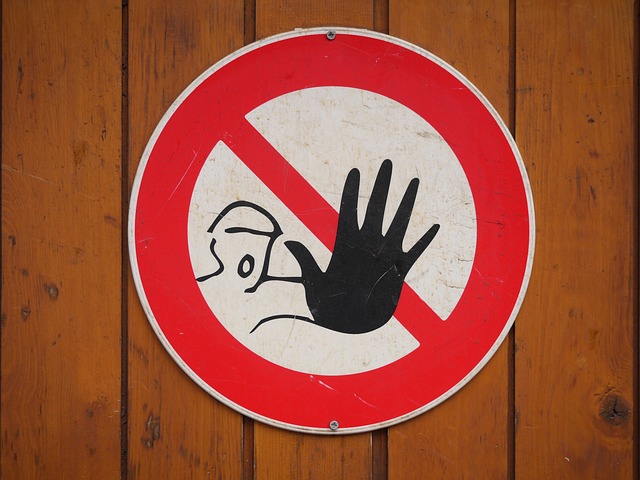
Let us see an example. An scenario in which a subject is convicted for four different crimes in the same criminal proceeding, for the first to ten years of imprisonment, for the second to five years of imprisonment, for the third for another five years of imprisonment, and for the fourth to three years of imprisonment. Now we calculate the triple of the gravest punishment, which is thirty years, time of imprisonment which exceeds the limit of twenty years of the article 76.1. Therefore, in our example, the convicted subject only will fulfill the first three convictions, and the fourth conviction of three years will be declared extinguished.
Let us see another example. A subject is convicted for six crimes, five years of imprisonment for the first, four years of imprisonment for the second, three years of imprisonment for the third, three years of imprisonment for the fourth, two years of imprisonment for the fifth, and one year of imprisonment for the sixth. First we calculate the triple of the gravest punishment, it will be fifteen years of imprisonment, we see that this amount does not exceed the limit of twenty years, so these fifteen years will be the limit of our example for the accumulation of convictions. In this case, the subject of our example only will fulfill the first four convictions, which will amount to fifteen years of imprisonment, while the fifth and the sixth will be declared extinguished for surpassing the limit of fifteen years.
Now let us pass to the second point of the article 76, which says: “The limitation will be applied although the punishments has been imposed in different proceedings when they have been imposed for facts committed before the date in which were tried the facts, being the object of accumulation, that have been tried in the first place.”
Second point of the article 76, which has to be completed with the stated in the article 988 of the LECrim: “When a sentence is firm, according to the article 141 of this law, it will be declared by the Judge or Court which has dictated it. Having been made this declaration, the sentence will be executed although the convicted is subjected to another cause, in which case the convicted will be fetched, when it is necessary, from the prison where he is fulfilling the conviction to the place where is being investigated the unresolved cause. When the convicted for various criminal infringements has been convicted in different proceedings for facts which could be the object of only one, according to the article 17 of this Law, the Judge or Court which has dictated the last sentence, ex officio, or at the request of the Public Prosecutor or of the convicted, will proceed to set the limit of the fulfillment of the punishments imposed according to the stated in the article 76 of the Criminal Code. For this, the court clerk will claim the criminal records from the central Register of convicted and rebells and testimony of the convictions and previous report of the Public Prosecution, when it is not the applicant, the Judge or Court will dictate motivated resolution where will be related all the punishments imposed to the convicted, determining the maximum of fulfillment of them. Against such resolution the Public Prosecution and the Convicted can lodge cassation appeal for infringement of law.”.
Let us now try to clarify the meaning of both articles, for this we will also use extracts from jurisprudence.
What the article 76.2 means is that, different convictions coming from different proceedings can be accumulated, being applicable to them the limit of the first point of the article 76, always that to the conviction which serves as reference for the calculation of the accumulation, are accumulated facts happened before the facts which appear in such sentence, that have been tried afterwards.
Let us try to clarify a little more the matter, the STS 2867/2022 says: “Said with another words, the sentences regarding the facts which are already sentenced must be excluded when the term of accumulation contemplated is initiated, this is, when it is committed the crime tried in the sentence which determines the accumulation; and, in second place, the sentences regarding with later facts to the sentence which determines the accumulation should be also excluded. Because in neither case, the facts could have been tried at the same time.”
Therefore, the following scenarios should be excluded:
1) The facts which are already sentenced when the contemplated term of accumulation is initiated, in other words, sentenced before the date of the sentence which initiates the term of accumulation.
2) The later facts to the sentence which determines the accumulation.
Because neither of them, could have been tried at the same time.
In the case of not following the above interpretation of the article 76.2, would be favored the formation of what has been denominated a punitive patrimony, in other words, that crimes occurred afterwards facts already tried, pass to form part of the limit marked by the first point of the article 76, what could suppose that once tried the new facts surpassed such limit, and consequently the new convictions extinguished or considerably reduced.
In order to determine the date of the sentence which serves as the point of departure for the accumulation, let us see what is said by this extract from the STS 2867/2022: “Lastly, and in what is concerned to the date of the sentences to be taken into account for making the calculation, it is necessary to stress that, according to reiterated doctrine of this Chamber, the date of the initial sentences is what matter, and not the date in which these sentences could be firm, after days, weeks, or even months after.”
Although the same sentence adds afterwards: “This criteria has been qualified in the non-jurisdictional Plenary meeting of the last 27 June, where was agreed that “When initial sentence is an acquittal and the conviction occurs for the first time in appellation or cassation, then, and only then, this second date will be the relevant for the accumulation.”
With regard to the article 76, the Second Chamber of the Supreme Court has adopted other agreements for the unification of criteria:
The agreement of 3 February 2016:
“The accumulation of the punishments must be done departing from the oldest sentence, for being contained in it the facts firstly tried, it will serve as reference regarding the rest of the facts tried in the other sentences. To this conviction will be accumulated all the later convictions regarding facts committed before this first sentence.
The convictions whose accumulation proceed with regard to this oldest sentence, cannot be the object of later operations of accumulation regarding the rest of the sentences. However, if the accumulation is not possible, nothing will impede their reconsideration regarding any of the later sentences, agreeing their accumulation if between them are compatible.
In order to comply with the art. 76.2 of the CP, the date of the sentence dictated in instance prevails, and not that of the trial.”
2) The agreement of 27 June 2022, which was already mentioned and that adopted, between others, the following agreements:
IV. “In the conciliation of the favorable interpretation of the article 76.2 CP with the art. 76.1 of the CP, it is possible to choose the initial sentence from which the accumulation begins, and also the last, always that all the block complies the chronological requisite demanded; but it is not possible to exclude an intermediate conviction from the block which complies with the chronological requisite demanded.”
VII. “The punishment of fine will be only accumulated once it has been transformed in subsidiary personal liability. This is not an obstacle for the conditional accumulation when the non-payment of the fine is evident.»
IX. “For the calculation of the accumulation the months are of 30 days and the years of 365 days.”
Let us now see the article 988. The article 988 regulates the procedure to be followed for the judge or court to which correspond to combine the convictions, establishing one requisite: “When the convicted for various criminal infringements has been convicted in different criminal proceedings for facts which could have been the object of only one, according to the art. 17 of this Law”. Well, this requisite, according to the resolution number 9407/2020 of the Barcelona´s Provincial Court, has been interpreted in a way flexible by our courts and judges: “The doctrine of this Chamber (SSTS 1249/1997, 11/1998, 109/1998, 328/1998, 1159/2000, 649/2004, y SSTS 192/2010 y 253/2011,1169/2011, between others, and the Agreement of the Plenary meeting of the Second Chamber of the Supreme Court of 29 November 2005), has adopter a favorable criteria to the convicted in the interpretation of the requisite of related actions which is demanded by the article 988 of the Criminal Procedure Act, and the article 76 of the Criminal Code for the legal accumulation of convictions for considering that, more than the analogy or relation between them, the relevant is that the actions are temporally linked. And in particular, the content of the Agreement of the Plenary meeting of the Second Chamber of the Supremo Court of 29 November 2005 according to which “it is not necessary the firmness of the sentence for the limit of the accumulation.”
In order to end, we cannot forget something which is also said by the STS 2867/2022: “Lastly, we have to take into account that the resolution of accumulation is not definitive if a new assessment of the possibilities of accumulation is more favorable for the convicted. Nor can the resolution of accumulation be regarded as it was a conviction, supplanting the true convictions. It is not its nature, which only is to establish a temporal limit which the execution of the different convictions cannot surpass. In this sense, we have already stated that the previous existence of combinations or accumulations do not impede a new assessment of the situation when new convictions are known which can be the object of accumulation ( SSTS of 9 May 2012, of 18 April 2013, and ATS of 15 December 2011).”
Art. 77:
In the article 77 are established other exceptions to the general rule of the article 73. What is established in the art. 73, is so-called a real concurrence of crimes, according to which, to the person liable of two or more crimes will be imposed all the punishments corresponding to the different infringements.

On the other hand, there also exist what have been so-called as ideal concurrence of crimes, and the medial concurrence of crimes, which are regulated in the article 77.
The ideal concurrence of crimes, takes place when one fact constitutes two or more crimes, and the medial concurrence of crimes, when the commission of one crime is the means necessary to commit another.
Let us now try to developed everything a little more. Firstly, we will distinguish the medial concurrence of crimes, from the other two types, the real concurrence of crimes and the ideal concurrence of crimes. For this, we will use this extract from the sentence number 1218/2022 of the Basque Country’s Superior Court: “there will exists medial concurrence of crimes when we are in front of …not only one fact, but two perfectly different and linked by a relation means and end. (…) It has to be identified, from rules of general experience, which, in the concrete case, the crime-end could not be objectively committed without the means-crime, typified as such in an independent way. What leaves out of the concurrence of crimes those cases which respond to the simple situational opportunity of commission, to the mere convenience or the greater easiness of commission.”
Therefore, we will be in front of a real concurrence of crimes or ideal concurrence of crimes, when each of the crimes could have been independently committed from the others, when there exist no relation of end-crime and means-crime between them.
The distinction between real concurrence of crimes and ideal concurrence of crimes is more complicated, and we will have to take into account the concrete case for seeing if there was unity of action, and there exist no concurrence of norms, for not being wholly absorbed the unlawfulness of the fact by one of the crimes. If there exists no unity of action, we will be in front of a real concurrence of crimes, conversely, when there existe unity of action, we will be in front of a ideal concurrence of crimes, if them cannot be identified as concurrence of norms.
For instance, in the case that we are studying a crime of sexual aggression and a crime of personal injury, caused in an unity of act. If the injuries are enough relevant, for not being absorbed by the crime of sexual aggression, we will be in front of a ideal concurrence of crimes and not in front of a concurrence of norms.
Another example. Now we are going to analyze the concurrence of crimes between the crimes of robbery and illicit detention, for this, we will use the STS 3099/2022: “It is clear that the execution of a crime of robbery with violence or intimidation implies the privation of ambulatory freedom for the victim while is subjected to them. In these cases, when the privation of freedom is inherent to the violence or the intimidation exercised for executing the robbery, the former crime is absorbed for the latter crime. In other cases, can be appreciated medial concurrence of crimes, when the privation of freedom exceeds this indispensable minimum but is a tool: it is exclusively at the service of the predatory acts; or it can be a real concurrence of crimes, in the cases in which a) the plurality of persons detained imposed this solution for one of the detentions will form the medial concurrence of crimes, and the others will be necessary to be punished separately; b) the detention is disconnected from the robbery medially: there is simultaneity, or the same temporal frame, but the privation of freedom becomes an autonomous and different objective disconnected from the lucrative intention; c) the prolongation of the detention surpasses the necessary (in the sense of the art. 77 CP) for the robbery ( STS no 618/2021, of 8 July).”
In this example, we see how the requisite of unity of act lacks, for being qualified as an ideal concurrence of norms, and not as a real concurrence of norms.
Let us now pass, to see the effects of upon the punishment of the ideal concurrence of crimes and the medial concurrence of crimes. According to the second point of the article 77, when there exists ideal concurrence of crime “the punishment envisaged for the gravest infringement will be applied in its superior half, without exceeding the sum of the punishments of the different infringements if they were punished separately. When the punishment exceeds this limit, the infringements will be punished separately.”
Let us apply the above to our first example. Although the crime of personal injury is not absorbed by the crime of sexual aggression, the sexual aggression will be the only punished for being the crime with the greatest punishment (supposing that we are in front of a simple crime of personal injury of the art. 147 of the CP, punished with imprisonment from three months to three years.), but the punishment will be imposed in its superior half. The crime of sexual aggression is punished by the art. 178 of the CP, with the punishment of imprisonment from one to five years. This punishment in its superior half is, from three years and one day to five years.
On the other hand, in the third point of the article 77 is regulated the punishment to be imposed in the case of medial concurrence of crimes. It says, “a superior punishment will be imposed than would have corresponded, in the concrete case, for the gravest infringement, and which cannot exceed the sume of the concrete punishments which would have been separately imposed for each one of the crimes. Within these limits, the judge or court will individualice the punishment according to the criteria expressed in the art. 66. In any case, the imposed punishment cannot exceed the limit of duration envisaged in the above point.”
Now, let us use the second of the examples. The crime of robbery in shops open to the public or in any of their dependences, is punished with imprisonment from three years and six months to five years. On the other hand, the crime of illicit detentions is punished with imprisonment from four to six years. In this case, there will be medial concurrence of crimes, when the privation of freedom exceeds that indispensable minimum but it is used a means, and is exclusively at the service of predatory acts. Besides, the crimen which will determine the punishment, will be the crime of illicit detention, for being the crime with the gravest punishment. This punishment should be the superior punishment in degree of the envisaged by the law for the author of a consummate crime, in other words, from six years and one day to nine years.
Differences between, how is punished the ideal concurrence of crimes and the medial concurrence of crimes: 1) The ideal concurrence of crimes is punished with the punishment in its superior half, while the medial concurrence of crimes is punished with the superior punishment in degree; 2) In the medial concurrence of crimes is specified that the judge or tribunal will individualize the punishment according to the criterio of the art. 66, something which should be also of application for the ideal concurrence of crimes, and; 3) In the medial concurrence of crimes is also limited the punishment, according to the limits fo the article 76, it can be understood, since in these cases is applied the superior punishment in degree.
Art. 78:
In the article 78, is compensated the limit of fulfillment of punishment of the article 76.1, with a delay in the access to the penitentiary benefits, exit permits, classification to the third degree and the calculation of the term for the parole, when, the punishment to be fulfilled is inferior to the half of the sum to the total punishments imposed.

In these cases, the ruling judge o court may agree that for their obtention is necessary to take into account all the punishments imposed in the sentence.
Later, in the second point of the art. 78, is allowed to the Prison Oversight Judge to agree the application of the general regimen of fulfillment to the prisoners which has incurred in the above case, if there is favorable report of social reintegration.
A possibility which is not applicable when, they are crimes referring to terrorist groups or organizations and crimes of terrorism of the Chapter VII of the Title XXII of the Book II of the CP, committed within criminal organizations. For these special kind of prisoners, the following rules will be applicable. They access to:
a) To the third penitentiary degree, when one fifth of the maximum limit of fulfillment of punishment remains to be fulfilled.
b) To the parole, when one eighth part of the maximum of fulfillment of punishment remains to be fulfilled.
Art. 78 bis:
The general rule for accessing to the third degree when is imposed the punishment of permanent reviewable imprisonment, is established in the art. 36.1. But this is only applicable for the cases in which only has been imposed the punishment of permanent reviewable imprisonment, or we are not in any of the scenarios of the art. 78 bis.1, for this last article makes more difficult the access to the third degree, having to be fulfilled by the prisoner:
a) A minimum of eighteen years of imprisonment, when the prisoner has been convicted for various crimes, one of them is punished with a permanent reviewable punishment and the rest of the punishments imposed sum a total which exceeds the five years of imprisonment.
b) Of a minimum of twenty years of imprisonment, when the prisoner has been convicted for various crimes, one of them is punished with a punishment of permanent reviewable imprisonment and the rest of the punishments sum a total which exceeds the twenty years.
c) Of a minimum of twenty-two years of imprisonment, when the prisoner has been convicted for varies crimes and two or more of them are punished with the punishment of permanent reviewable imprisonment, or one of them is punished with the punishment of permanent reviewable imprisonment and the rest of the punishments sum a total of twenty-five years or more.

Besides, in the second point of this article, are established additional requisites to those established in the art. 92 for the suspension fo the punishment of permanent reviewable imprisonment.
And in the third point, for accessing to the third degree and the suspension of the punishment of permanent reviewable imprisonment when are crimes referring to terrorist or group organizations and crimes of terrorism of the Chapter VII of the Title XXII fo the Book II of the CP, or committed within criminal organizations.
Art. 79:
Lastly, the Chapter II, of the Title III, of the Book I of the CP, ends with the article 79, which states that: “Always that the judges and courts impose a conviction that carries with it another accessories, they will expressly convict to the punished to these last too.”
The accessory punishments, are right´s privative punishments and are regulated in the fifth Section, of the above chapter. In this section, are established the norms, for the imposition of the accessory punishments.
The article 79 imposes the obligation to the judges and courts, of expressly convicting the punished of the accessory punishments when the requisites of the fifth Section are met, and consequently to motivate and reason the imposition of this kind of punishments.
Víctor López Camacho.
Twitter: @victorsuperlope.
More on my website: www.victorlopezcamacho.com
